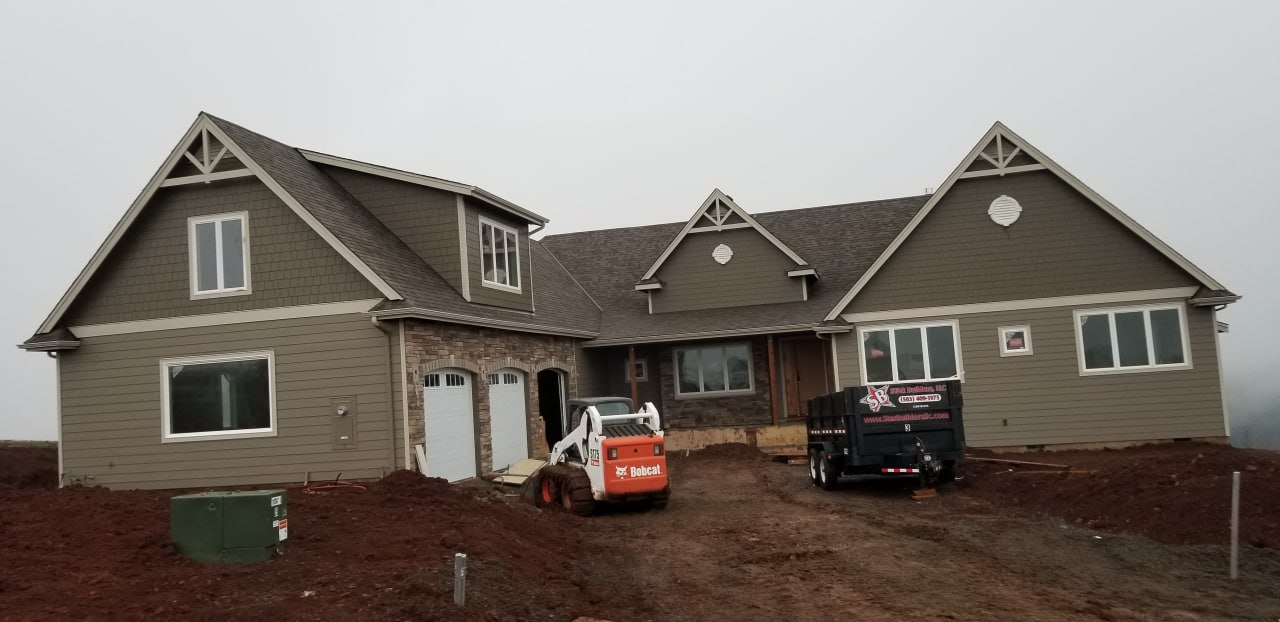Handling unexpected issues and changes during a project is a critical aspect of project management, whether it’s in the context of remodeling ideas, remodeling cost estimates, or home renovation contractors. In any project, no matter how well-planned, unforeseen challenges are bound to arise. These challenges can be in the form of changes in client preferences, unexpected structural issues, budget constraints, or external factors such as weather conditions. To navigate such obstacles successfully, project managers and team members need to be adaptable, proactive, and have a well-defined plan in place.
In this comprehensive guide, we will explore various strategies and best practices for handling unexpected issues and changes during a project, with a particular focus on remodeling projects and home renovations. We will discuss the importance of effective communication, the role of risk management, the significance of contingency planning, and the value of a responsive project team. By the end of this article, you will be equipped with the knowledge and tools to effectively manage unexpected issues and changes in your projects, ensuring they stay on track and within budget.
Understand the Project Scope
Before delving into how to handle unexpected issues and changes, it’s essential to start with a clear understanding of the project scope. In the context of remodeling projects and home renovations, this means having a well-defined plan that outlines the specific goals, objectives, and deliverables. This plan should include remodeling ideas, a remodeling cost estimate, and details about the home renovation contractors involved.
By having a well-documented scope, you create a baseline against which you can evaluate any proposed changes or unexpected issues. Any changes that align with the project’s scope can be considered, while those that deviate significantly may require a more thorough assessment. Having a clear scope also helps in establishing expectations with clients and stakeholders, reducing the likelihood of disagreements later on.
Effective Communication is Key
One of the most critical aspects of handling unexpected issues and changes in a project is effective communication. This holds true for all types of projects, but it becomes particularly crucial in the context of remodeling and home renovation projects, where client preferences can evolve, and unforeseen challenges can arise frequently.
Communication should be open, transparent, and ongoing throughout the project. Regular meetings with the project team, home renovation contractors, and clients can help identify potential issues early on and allow for timely adjustments. It’s important to create a communication plan that outlines who needs to be informed, how often, and through which channels.
When it comes to remodeling projects, clients often have specific ideas and preferences that may change as the project progresses. Therefore, maintaining a strong line of communication with clients is essential to ensure their satisfaction. Listen to their feedback, address their concerns, and provide updates on any changes to the project plan or budget promptly.
Embrace Risk Management
Project managers should proactively identify and assess potential risks that could impact the project. This includes risks related to remodeling cost estimates, materials availability, weather conditions, and more. By conducting a thorough risk analysis, project teams can develop risk mitigation plans and be better prepared for unexpected issues.
In the context of remodeling projects, it’s essential to consider factors that may affect the cost estimate. This could include fluctuations in material prices, unforeseen structural issues in the existing property, or changes in the project timeline due to external factors. Having contingency plans in place to address these potential risks can help keep the project on track.
Additionally, risk management should be an ongoing process throughout the project’s lifecycle. Regularly revisit the risk assessment, update mitigation strategies as needed, and be prepared to adjust the project plan when new risks arise.
Establish a Change Management Process
A well-defined change management process is essential for handling unexpected changes in a project effectively. This process should outline how changes are requested, evaluated, approved, and implemented. In the context of remodeling and home renovation projects, changes can range from alterations in design and materials to adjustments in the project timeline or budget.
The change management process should include clear criteria for evaluating proposed changes. Consider factors such as the impact on project scope, budget, and timeline. Determine who has the authority to approve changes and establish a transparent workflow for documenting and communicating changes to all relevant stakeholders.
It’s important to strike a balance between accommodating necessary changes and preventing scope creep, which can lead to budget overruns and project delays. Carefully evaluate each change request to ensure it aligns with the project’s objectives and scope.
Maintain Detailed Records
Accurate and detailed record-keeping is vital in managing unexpected issues and changes during a project. This includes documenting all project-related communications, change requests, approvals, and any deviations from the original project plan. Maintaining a comprehensive record of project activities helps in tracking progress, identifying trends, and resolving disputes.
In the context of remodeling projects, detailed records can be particularly useful when dealing with changes in design or scope. Having a record of all design iterations, approvals, and corresponding cost estimates can help project managers and home renovation contractors manage changes efficiently and transparently.
Modern project management software and tools can facilitate the process of record-keeping by providing centralized storage and easy access to project-related documents and communication history.
Create Contingency Plans
In the face of unexpected issues and changes, having contingency plans in place can be a lifesaver. These plans should outline alternative courses of action that can be implemented when specific challenges arise. Contingency plans can cover various aspects of a project, including budget, schedule, and resources.
For remodeling and home renovation projects, consider contingency plans for potential budget overruns. This may involve setting aside a portion of the budget as a reserve specifically for unforeseen expenses. Having a financial cushion can help absorb the impact of unexpected changes in project scope or unforeseen issues that require additional funds.
Contingency plans should also address potential delays in the project schedule. Factors such as weather-related disruptions, permitting delays, or unforeseen structural problems can lead to project timeline adjustments. By having a plan in place to minimize schedule disruptions, project managers can mitigate the impact of unexpected issues.
Engage a Responsive Project Team
The success of any project, including remodeling and home renovation projects, depends heavily on the responsiveness and expertise of the project team. It’s essential to have a team that is adaptable, creative, and capable of problem-solving when unexpected issues arise.
When selecting home renovation contractors or team members, consider their experience in handling similar projects and their ability to work collaboratively. A responsive project team is more likely to identify potential issues early on and propose effective solutions. They should also be open to feedback and willing to adjust their approach when necessary.
In addition to the project team, maintain open lines of communication with subcontractors, suppliers, and other external parties involved in the project. They can provide valuable insights and solutions when unexpected issues arise, ensuring that the project stays on track.
Prioritize Client Satisfaction
In remodeling and home renovation projects, client satisfaction is paramount. Clients often have a personal and emotional attachment to their homes, making it essential to prioritize their needs and preferences throughout the project. Managing unexpected changes in a way that aligns with client expectations is crucial for maintaining positive client relationships.
When unexpected issues or changes arise, involve the client in the decision-making process whenever possible. Provide them with clear explanations of the situation, potential solutions, and the implications for the project timeline and budget. By keeping clients informed and engaged, you can build trust and reduce the likelihood of disputes.
Additionally, consider offering alternatives or options when changes are required. For example, if a particular material is unavailable, present alternative options that meet the client’s aesthetic and functional requirements. Collaboration and flexibility can go a long way in ensuring client satisfaction.
Monitor and Adjust the Project Plan
A dynamic project plan that allows for adjustments is essential when handling unexpected issues and changes. Project managers should regularly review the project plan and make necessary updates based on new information or developments. This includes revising the project timeline, budget, and scope as needed.
When making adjustments to the project plan, consider the impact on all project stakeholders, including the client, home renovation contractors, and the project team. Ensure that changes are communicated effectively and that everyone is on the same page regarding the revised plan.
In remodeling and home renovation projects, changes to the project plan can have a domino effect on other aspects of the project. For example, a delay in the delivery of materials may necessitate adjustments to the project schedule. Being proactive in monitoring the project’s progress and making timely adjustments can help minimize disruptions.
Learn from Each Project
Handling unexpected issues and changes is a learning experience for both project managers and project teams. After each project, take the time to conduct a post-project review or debriefing session. Evaluate what worked well and where improvements can be made in managing unexpected issues and changes.
Encourage open and honest feedback from the project team, home renovation contractors, and clients. Use this feedback to refine your project management processes and procedures. Look for common themes or recurring issues that can be addressed in future projects.
Additionally, consider maintaining a lessons learned repository to document valuable insights and best practices. This repository can serve as a resource for future projects, helping project managers and teams proactively manage unexpected issues and changes.
Handling unexpected issues and changes is an inherent part of project management, whether you’re working on remodeling ideas, remodeling cost estimates, or home renovation contractors. By following the strategies and best practices outlined in this guide, project managers can effectively navigate the challenges that arise during a project and keep it on track.
Effective communication, risk management, and contingency planning are essential elements in managing unexpected issues and changes. Establishing a clear change management process, maintaining detailed records, and engaging a responsive project team can further enhance a project’s ability to adapt to unforeseen challenges.
Ultimately, the key to successful project management lies in prioritizing client satisfaction, monitoring and adjusting the project plan as needed, and continuously learning from each project. With the right approach and a proactive mindset, project managers can not only handle unexpected issues and changes but also turn them into opportunities for growth and improvement in their projects.

